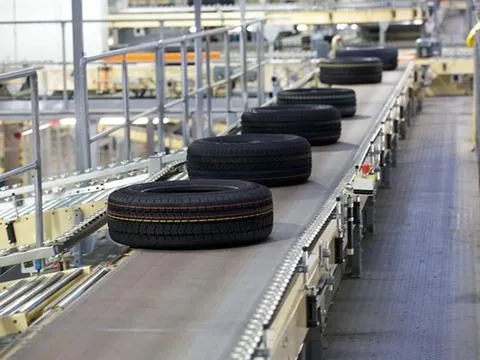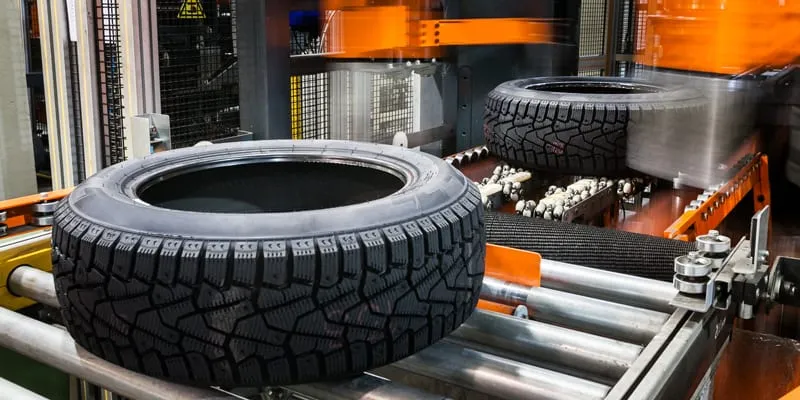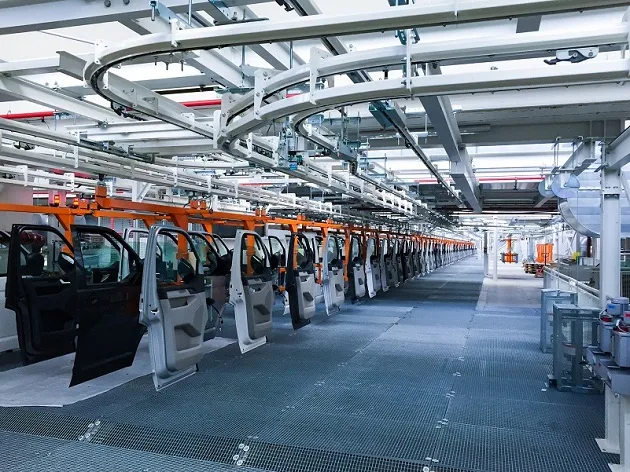Mục lục
The automotive industry has been a thriving industry for many years. Efficient and well-functioning automated manufacturing process solutions are key to maintaining profitability and meeting the ever-increasing customer demands in the automotive industry.
The automotive industry uses conveyors to move automotive parts and materials down the assembly line. Conveyors can come in many different shapes and sizes, but they are well maintained. A well-maintained conveyor system is a must in the automotive manufacturing industry due to the size and weight of the materials and automotive parts required.
The automotive industry uses conveyors to move automotive parts and materials down the assembly line. Conveyors can come in many different shapes and sizes, but they are well maintained. A well-maintained conveyor system is a must in the automotive manufacturing industry due to the size and weight of the materials and automotive parts required.
What is an Automotive Assembly Conveyor System?
Automotive assembly conveyor systems are widely used in automotive assembly plants to move automotive parts during the manufacturing process. Typically, conveyors are used to move cars from one location to another, where they are worked on by teams of assembly workers. Conveyor systems are also used to move materials and components such as engines and doors around the assembly plant.
Uses of Conveyors in Automotive Assembly lines
Conveyors in automotive assembly lines have many important uses in the manufacturing and assembly of cars. Conveyors help move parts, components, and assemblies from one workstation to another seamlessly and efficiently.
Conveyors carry parts and components to their assembly or mounting locations. This increases consistency and accuracy in assembly. During production, conveyors can transport cars through paint and coating stations. This ensures that the paint is applied evenly and with quality. Conveyors can take products through packaging and final inspection before they are shipped.
Conveyors have the ability to create a seamless manufacturing process and optimize production efficiency in large automotive manufacturing plants. Conveyors help optimize production time by moving products through workstations quickly and efficiently.
5 Types of Conveyors commonly used in automotive assembly lines
A conveyor system consists of one or more different conveyors, operating alone or in sequence with other types of systems. Here are the three types of conveyors commonly used in automotive manufacturing assembly:
1 - Belt Conveyors
One of the more flexible types of assembly conveyor systems, belt conveyor systems can be manufactured in various lengths. For extended or custom production line setups, they can be made to move around the production line. The flat surface of conveyors makes them ideal for loads of various sizes and shapes. Rubber conveyors are commonly used for the transportation of tires.

2 - Roller Conveyors
Available in gravity or powered configurations, roller conveyors are ideal for moving heavier items. The larger size of heavier items means they will not get caught in the rollers. With a gravity-powered conveyor system, power may not be required to transport very heavy items over long distances.
Roller conveyors are a common fixture in manufacturing environments. The conveyor surface is extremely durable, so it provides years of trouble-free service and minimizes costs associated with downtime. .A chain-driven roller is often used to move pallets or large heavy items through an automotive manufacturing assembly plant.

3 - Overhead Conveyor Systems
If there is one type of conveyor system that can be configured to carry materials in a wider variety of configurations, sizes, and weights, it is the overhead conveyor. One of the more effective advantages of overhead systems is the ability to free up floor space by using the empty space above to convey things.

4 - Chain Conveyor Systems:
The biggest advantage is that they are extremely sturdy, as they are made of steel and have a rivet-free construction that can be easily assembled and disassembled by hand. There are two types: U-shaped conveyor chains for transporting light loads that allow for steep inclines and flexible layouts, and JX-type chains for transporting heavy loads with high durability. Chain conveyor systems can be used in both overhead and underground installations.
Chain conveyors can be used in various transport conditions. Their high functionality and reliability are still useful in current configurations. Chain conveyors are used to transport car bodies or vehicles on runways through different production departments. To achieve this purpose, heavy-duty and low-maintenance conveyor chains are used.
5 - Traction Conveyor:
Built into the floor, allowing assembly line workers full access to the vehicle being transported along the vehicle assembly line. The conveyor system consists of an endless loop of chain that is wrapped into straight or curved sections formed into the floor. The transport vehicles or loaded vehicles are pulled by chains within the track section.
Benefits of using conveyors in automotive assembly lines
Using conveyors in automotive assembly lines offers many important benefits to the automotive industry. Here are some of the key benefits of using conveyors in automotive assembly:
- Increased production efficiency: Conveyors help speed up the automotive assembly process by moving parts and components from one workstation to another quickly and efficiently.
- Reduced labor: Instead of workers having to transport and lift heavy parts, conveyors can do the job. This reduces stress and the risk of injury to workers.
- Accuracy and consistency: Conveyors operate at a fixed speed and schedule, ensuring that every step of assembly and quality control is performed to the same standard and order.
- Space optimization: Conveyors can be customized to optimize the use of manufacturing plant space. This helps create a space-efficient production model.
- Process control: Conveyors allow for control of the manufacturing process and step-by-step progress tracking. This makes it easy to detect errors and fix them immediately.
- Increased adaptability: Conveyors can be easily changed or customized to accommodate variations in manufacturing requirements or product design.
- Increased production speed: Conveyors can transport parts and components quickly, increasing production speed and reducing assembly time.
- Cost Savings: While the initial investment can be expensive, using conveyors can lead to long-term cost savings through increased efficiency and reduced labor.
- Quality Control: Conveyors help ensure that every step of assembly and quality control is performed correctly, helping to ensure the final quality of the automotive product.
- Safety: Conveyors are highly safe, ensuring that parts and components are transported safely and without the risk of injury to employees.
Using conveyors in automotive assembly lines not only increases production efficiency but also improves the safety, quality and consistency of the manufacturing process.
Important considerations for purchasing conveyors in Automotive Assembly Lines
Using conveyors in automotive assembly is an important part of the manufacturing process, ensuring that cars are produced efficiently, consistently and with high quality. When purchasing a conveyor for your automotive assembly line, there are a few important considerations to make sure you are investing in a reliable and efficient system.
- Make sure the conveyor you choose is suitable for the specific task and requirements of your automotive assembly line. Consider the load capacity, speed, size, and features required.
- The quality of the conveyor is important. Make sure it is made of quality materials and has a robust design to ensure reliability during use.
- Make sure the conveyor is designed and equipped with safety features, such as automatic stop sensors in case of need. Safety is always a top priority.
- Consider the maintainability of the conveyor. The system should be easy to maintain and repair to ensure it is always operating efficiently.
- Choose a reputable conveyor supplier who is able to provide good support and warranty services. This is important to ensure that any problems or issues can be resolved quickly.
- Before purchasing, have the system inspected and tested to ensure that it is working properly and meets your requirements.
High-quality conveyor system installation address for automotive assembly lines
Conveyor systems play an important role in ensuring that the production process in an automotive assembly plant runs smoothly. They help keep work areas organized and reduce the need for workers to move around the plant, which can save time and increase efficiency. In addition, conveyors can help reduce worker injuries because they reduce the need for workers to lift heavy objects.
At Intech, we provide high-quality conveyors at the best prices available today. The types of conveyors for automotive assembly lines are installed by us on request, ensuring that you will have a durable, reliable system. Contact Intech today for the best advice and support.
- Hotline: 024 66 806 795
- Address: Lot 6, Lai Xa Industrial Park, Tay Tuu Ward, Hanoi City





